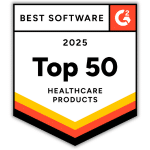What Are HIPAA Compliant Sign in Sheets?

HIPAA compliant sign in sheets, or HIPAA compliant patient sign in sheets, limit PHI exposure. There is a risk of accidental PHI disclosure, such as to other patients, from their use. This is why certain measures must be put in place to protect patient privacy when using patient sign in sheets. More details about HIPAA compliant sign in sheets are discussed below.
HHS on HIPAA Compliant Sign in Sheets
On the Department of Health and Human Services’ (HHS) website, they provide insight into the use of patient sign in sheets.
Their advice is as follows:
“Covered entities, such as physician’s offices, may use patient sign-in sheets or call out patient names in waiting rooms, so long as the information disclosed is appropriately limited. The HIPAA Privacy Rule explicitly permits the incidental disclosures that may result from this practice, for example, when other patients in a waiting room hear the identity of the person whose name is called, or see other patient names on a sign-in sheet. However, these incidental disclosures are permitted only when the covered entity has implemented reasonable safeguards and the minimum necessary standard, where appropriate. For example, the sign-in sheet may not display medical information that is not necessary for the purpose of signing in (e.g., the medical problem for which the patient is seeing the physician). See 45 CFR 164.502(a)(1)(iii).”
How to Implement HIPAA Compliant Sign in Sheets
To implement patient sign in sheets that are HIPAA compliant, protected health information (PHI) must be limited. Information contained on a patient sign in sheet should only include the patient’s name and date.
In addition, sign in sheets must also be stored in a secure location to prevent unauthorized access to the PHI. This is why it is advisable to, instead of using paper sign in sheets, consider using an electronic sign in sheet. This way, patients can sign in on a tablet so that other patients cannot see their information.
Another way to implement electronic sign in sheets is by having patients verbalize their name to the practice administrator so that they may sign in patients, preventing other patients from viewing their information.
However, if you choose to use a paper sign in sheet, you should cover the upper section of the sheet so that the previous patient’s name is not exposed to the next patient that is signing in. Paper sign in sheet must also be properly disposed of at the end of day by shredding the sheet.
Do You Need a Patient Sign in Sheet for Your Practice?
Compliancy Group has HIPAA compliant sign in sheets available for free. Please click here to get your free patient sign in sheet.
We hope that our free resources are helpful to you and your practice. If you need more help, consider contacting us to track and manage your HIPAA compliance program. We know how confusing compliance can be. By working with our customers step by step, and by listening to their concerns, we are able to effectively address their issues. Our clients feel comfortable working with us, because they feel comfortable communicating with us, And this makes sense: We were named as one of Inc’s Best Places to Work, and Fastest Growing Private Companies in America. People like us, and they like the results we bring.







